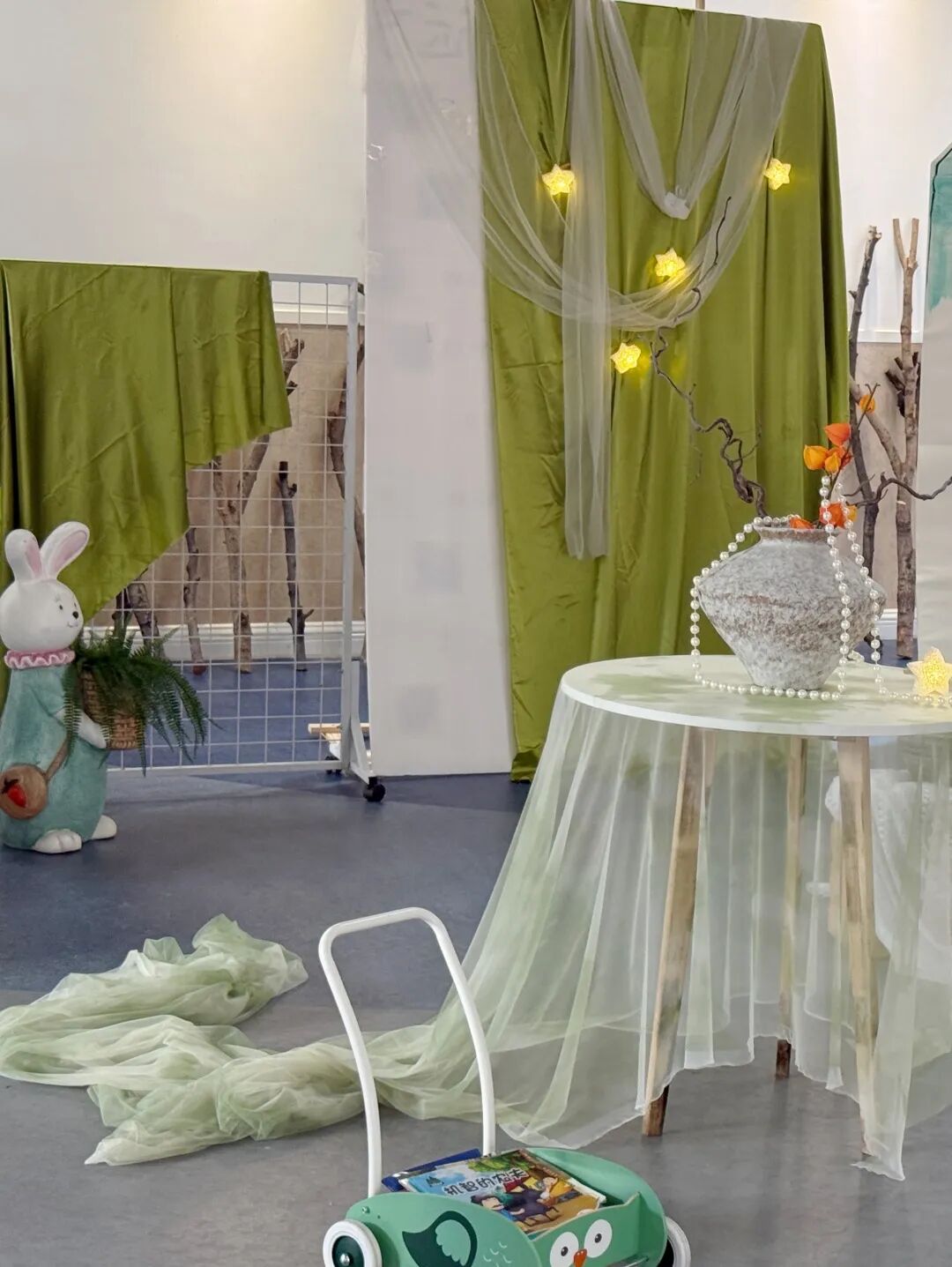王老师微信:18610206462
#父亲节#主题活动
有人说,父爱如山,大爱无言
有人说,父爱是一颗不落的星星
幸福和温暖荡漾在我们心底
父爱
在一百个孩子心里有一百种想法
每个孩子都是爸爸眼中的天使
尽管他们平时因为忙于为家庭付出
没有太多时间去陪伴
但对他们的爱却一点都不少
Stude
A
Properties: Recorder, Overhead Projector and a map of world.
Teaching Objectives:
1. Practise listening ability.
2. Revise the grammar: the Comparative Degrees of Adjective and Adverbs
The Past Perfect Tense
Language Focus: Checkpoint 18
Teaching Procedures:
I. Showing the teaching aims
II. Revision
Check homework, then ask the students to read the partners’ homework to share with each other.
Revise the use of the Infinitive
III. leading in
T: Today we’ll learn something about Coco. Do you know where she is from?
IV. Listening practice
Play the tape or for the students to listen and find the answer, then look at the workbook, Exercise 1, go through the questions with the students and make sure they can understand what they mean. Play the tape again, let the students discuss their answers in pains before the teacher checks the answers with the whole class.
V. Presentation
Show the students a map of the world, and ask: What map is it? Help the students find “China” and “India” on the map. Let the students discuss the two countries: They are developing countries. They have a large population in the world.
Ask: What’s the population of China and what’s the population of India? Let the students read Part 2 and answer the questions. (China’s population is 1 328 000 000 and India’s population is 1 000 000 000). That’s to say India’s population is smaller than China’s .Ask the students to use the words in the box to complete the passage, then read together, finally ask the students to retell the text.
VI. Practice
Revise the Grammar: The Past Perfect Tense, give some examples:
1. He had left before his wife came back.
2. I remembered that Peter had already got a bike.
3. By the end of last month, he had learned 2000 new words.
4. When I got to the cinema, the film had begun.
Then ask the students to do Exercise 3. The answers are: 1 C 2 E 3 A 4 B 5 D. Let the students read these sentences together.
VII. Practice
Ask the students to do Exercise 4 first, then check the answers. The answers are: had, in, is, more, the, had, to, in, had, that, to, us, and, to
VIII. Workbook
Give the students five minutes to finish workbook. Do Exercises 1, 3 and 4. Then check the answers.
The answers to Exercise 1 are: took, went, found, was, called, told, had happened, said, would go, came, was found, checked, founded, said, stole, went, enjoyed, came, found, had stolen, had
The answers to Exercise 3 are: I worn out 2 try on 3 slow down 4 made up my mind 5 am pleased with 6 were angry with, deserve to 7 at least 8 as if 9 carried on
IX. Summary
Exercises in class
Fill in the blanks according to the text in this unit.
Lucy and Lily are___1___. They are living together___2___. But sometimes they fight. It doesn’t last too___3___. They___4___very well with each other again.
They look___5__, so it’s hard for people to recognize them: Who is Lucy___6__Lily. We always___7___mistakes. They feel___8__. They like most of the same things, for example: music, food and___9__. But Lily likes to___10__, Lucy likes to___11__, they don’t like the same colour,____12___. So they have some___13____Sometimes they disagree, but they never___14__. They love each other and they are___15___happy that they are twins.
Answers: 1.twins 2.most of the time 3.long 4.get on 5.the same 6.or 7.make 8. the same 9. books 10 .dance 11. sing 12. either 13. differences 14. fight 15.both
X. Homework
Prepare for the final examination.
Lesson 70 教学设计方案
Properties: Computer, Projector, PPT document provided.
Teaching Objectives:
1. Let the students understand the dialogue and learn new words.
2. Go over the Past Perfect Tense.
Language Focus:
New words: British, fail, summit, misty, mist
Useful expressions: disappear into, the first men to do tins, try to reach the top of
Teaching Procedures:
I. Showing the teaching aims
II. Revision
Ask the students to act out the dialogue is provided in Lesson 69-1.asf
III. Lead in
Give the students some information and pictures about Mount Qomolangma, and check their homework. Let them speak something about the history of climbing the Mount Qomolangma.
For example:
It was formed 60million years ago and ascends to the height of 8850. Surveyor General Andrew Waugh proposed to name the mountain Everest after his predecessor, George Everest. This name prevailed until today, although the mountain has two local names – Qomolangma in Tibetan, Sagarmatha in Nepali.
IV. Watch and listen
Ask the students to watch the flash Because it is there.swf which is provided. Listen the text carefully, and finish the questions:
True or False
1. Mount Qomolangma is the tallest mountain in the world. ( )
2. George Mallory is a professional (职业的) mountain climber. ( )
3. Mallory had tried four times to reach the top of the mountain. ( )
4. In 1921 he tried to climb the mountain for the first time. ( )
5. Edmund Hillary and Tenzing Norgay were thought to be the first men to reach the top of the mountain. ( )
6. Edmund Hillary found Mallory’s body in 1999. ( )
Answers:
1. √ 2. × 3. × 4. √ 5. √ 6. ×
V. Read the text
Let the students read the text carefully and grasp the main idea of this article. And find out what happened in different years (1921, 1922, 1924, 1953, 1999).
nne’s Best Friend Do you want a friend whom you could tell everything to, like your deepest feelings and thoughts? Or are you afraid that your friend would laugh at you, or would not understand what you are going through? Anne Frank wanted the first kind, so she made her diary her best friend. Anne lived in Amsterdam in the Netherlands during World War Ⅱ. Her family was Jewish so nearly twenty-five months before they were discovered. During that time the only true friend was her diary.
She said, ”I don’t want to set down a series of facts in a diary as most people do, but I want this diary itself to be my friend, and I shall call my friend Kitty.” Now read how she felt after being in the hiding place since July 1942. Thursday 15th June, 1944 Dear Kitty, I wonder if it’s because I haven’t been able to be outdoors for so long that I’ve grown so crazy about everything to do with nature. I can well remember that there was a time when a deep blue sky, the song of the birds, moonlight and flowers could never have kept me spellbound. That’s changed since I was here. …For example, one evening when it was so warm, I stayed awake on purpose until half past eleven in order to have a good look at the moon by my self. But as the moon gave far too much light, I didn’t dare open a window. Another time five months ago, I happened to be upstairs at dusk when the window was open. I didn’t go downstairs until the window bad to be shut. The dark, rainy evening, the wind, the thundering clouds held me entirely in their power; it was the first time in a year an
ts exercise, fit, strong, pollutionshare… with…, notice, pay attention to, signals, safety rules, helmets, light-colored, reflectors, in case of, first aid, call 120Stage 4:Post-readingFinish Ex.2 and a translation task.Stage 5:ProjectHow can we be safe on the road? Write a passage according to the information in 3, add your own ideas. The following words may help you.should (not)/must (not)/had better (not)play on the road; listen to music;look left/right; pay attention to;obey traffic rules; first aid;Stage 5:Summary and homework1. Summary:New words and phrases:truck, notice, safety,in a word, look out, pay attention toUseful expressions:Bicycle riding is good exercise.In a word, the best way to be safe is to be careful.Safety rules for bike riders:They must wear helmets to protect their heads.…, bicycle riders should know how to give first aid.2. Homework:a) Review the key point in Section C.(2) Complete the passage of Project.(3) Preview Section D. Collect information about bicycle races.V. Blackboard designSection CWords and expressionssafety, truck, notice, injury, signal, pay attention to, in case ofcan master the rules of changing original verbs into past tense, for example, learn-learnt, study-studied and so on.
Ability aims:
Students’ ability of listening will be improved and they can make a new conversation by using simple past tense.
Emotional aims:
Students will be interested in learning English grammar and they will have the courage to challenge the new things.
Teaching key points and difficult points:
Key points:
Students can master the rules of changing original verbs into past tense, for example, learn-learnt, study-studied and so on.
Ability aims:
Students’ ability of listening will be improved and they can make a new conversation by using simple past tense.
Emotional aims:
Students will be interested in learning English grammar and they will have the courage to challenge the new things.
Teaching key points and difficult points:
Key points:
Students can master the rules of changing original verbs into past tense.
Difficult points:
Students will use simple past tense to describe an unforgettable experience that happened in the past.
Teaching procedures:
Students can master the rules of changing original verbs into past tense, for example, learn-learnt, study-studied and so on.
Ability aims:
Students’ ability of listening will be improved and they can make a new conversation by using simple past tense.
Emotional aims:
Students will be interested in learning English grammar and they will have the courage to challenge the new things.
Teaching key points and difficult points:
Key points:
Students can master the rules of changing original verbs into past tense.
Difficult points:
Students will use simple past tense to describe an unforgettable experience that happened in the past.
Teaching procedures:
Step 1 Lead-in
Greet students and sing a song Yesterday once more.
Ask students the topic of this song then lead in the new class naturally.
(Justification: the song’s topic relates to the past and it is a very classic English song, so students will be drowned in the music even try to study this song.)
Step 2 Pre-listening
Give some examples to introduce the rules of changing original verbs into past tense.
Let students make some sentences to describe an experience of their own.
(Justification: students will be familiar with the grammar point and they can have a basic awareness of the English grammar.)
Step 3 While-lisening
1. Extensive listening
Listen to the tape for the first time and answer the quest
Unit 1 How do you study for a test?
Teaching aims:
Knowledge aim:
Students can accumulate some useful words through reading, such as frustrating, conversation and so on.
Students will learn more ways to learn English better.
Ability aim:
Students can use some basic reading strategies including skimming, scanning and prediction to read efficiently.
Emotional aim:
Students will be interested in learning English and can find the best way to learn English well.
Key points and difficult points:
Key points: Students can master some useful expressions and comprehend the content of this passage.
Difficult points: Students can master some useful reading strategies and put them into practice.
Teaching Aids: PPT. pictures
Teaching Procedures:
Step 1 lead in
1. Greeting with my students
2. Free talk
Let students talk about why they learn English freely and invite some students to share their idea with us.
S1: because it is very useful for us to communicate with foreigners…
S2: because we should have a good score in English examination.
By this way, teacher will lead students to think another question as they believed that English is very important in our life. “How can we learn English well?” then teacherwill lead in today’s topic “how do you learn best?”
Step 2 Pre-reading
Discussion and prediction
Teacher will encourage students to discuss with their partners about the way they usually use to study English, at the same time, let them predict what the author will tell us in this passage.
Step 3 While- reading
1. Global reading
Ask students to skim the passage and try to summarize the general idea of it. Then let students scan the passage for some specific information and answer the following questions,
“How many persons are mentioned in this passage?”
“How many ways do the characters mention in this passage?”
2. Detailed reading
Students will be required to read the passage again to finish the chart below the passage.
Step 4 post-reading
1. Deal with the language points
After students have finished reading, Teacher will ask them try to find the new words and expressions in the passage. They should try to learn them by themselves. Then we will deal them together.
2. Pair work
Students will work in pairs to do a survey by using the expressions on the textbook. Then they should finish the chart below the passage.
Summary and homework
Ask students to do a survey on more students about their ways of learning English.
Blackboard design
ion:
What are they talking about?
(Justification: students’ ability of getting main idea through extensive listening will be improved.)
2. Intensive listening
Listen to the tape one more time and answer the questions:
1. What does Lingling’s grandma do?
2. What does Lingling’s grandpa do?
3. Is Lingling’s grandpa learning English now?
(Justification: these questions can help students grasp some detailed information of Lingling’s family, and also, their listening ability will be improved.)
Step 4 Post-listening
Four students in a group, share an unforgettable experience with their partners. PaWoman :Good morning,sir!Can I help you?Dad: Yes,please. What w 1 you like,Ann?Ann : A l 2 bowl of noodles w 3 carrot and beef. I’m hungry.Dad: Anything to d 4 ?Ann: Yes. A glass of orange j 5 .Dad: OK. What a 6 you,Tom?Tom: I’m not h 7 .Just a b 8 of water.Dad: All right. And I’d l 9 a cup of tea.Woman :H 10 you are.Dad: Thank you.y attention to use the simple past tense. After 5minutes, some students will be invited to share in front of the class.
(Justification: this activity can help students improve their speaking ability, and can provide them a chance to apply the knowledge into real situation.)
Step 5 Summary and homework
Summary: Invite one student to summarize what we have learned today, and the teacher will give some help to complete.
Homework: Ask students to share the experience with their parents in English after class.
Blackboard design:
Step 1 Lead-in
Greet students and sing a song Yesterday once more.
Ask students the topic of this song then lead in the new class naturally.
(Justification: the song’s topic relates to the past and it is a very classic English song, so students will be drowned in the music even try to study this song.)
Step 2 Pre-listening
Give some examples to introduce the rules of changing original verbs into past tense.
Let students make some sentences to describe an experience of their own.
(Justification: students will be familiar with the grammar point and they can have a basic awareness of the English grammar.)
Step 3 While-lisening
1. Extensive listening
Listen to the tape for the first time and answer the question:
What are they talking about?
(Justification: students’ ability of getting main idea through extensive listening will be improved.)
2. Intensive listening
Listen to the tape one more time and answer the questions:
1. What does Lingling’s grandma do?
2. What does Lingling’s grandpa do?
3. Is Lingling’s grandpa learning English now?
(Justification: these questions can help students grasp some detailed information of Lingling’s family, and also, their listening ability will be improved.)
Step 4 Post-listening
Four students in a group, share an unforgettable experience with their partners. Pay attention to use the simple past tense. After 5minutes, some students will be invited to share in front of the class.
(Justification: this activity can help students improve their speaking ability, and can provide them a chance to apply the knowledge into real situation.)
Step 5 Summary and homework
Summary: Invite one student to summarize what we have learned today, and the teacher will give some help to complete.
Homework: Ask students to share the experience with their parents in English after class.
Blackboard design:
Students can master the rules of changing original verbs into past tense.
DifficThe teacher asks the students to read 1a and match the topic sentence with each paragraph. Then write a title for the passage in the box above.2. Read and understand. The teacher plays a flash about the text. After watching it, the students should find the answers to the questions in 1c.(1)What do people use bicycles for?(2)Why is bicycle riding good exercise?(3)How do bicycle riders protect their heads?(4) What must bicycle riders do when riding at night?(5)If a bicycle rider is badly hurt in a traffic accident, what should he / she do?3.Do some listening. Listen to 1a and find out ult points:
Students will use simple past tense to describe an unforgettable experience that happened in the past.
Teaching procedures:
Step 1 Lead-in
Greet students and sing a song Yesterday once more.
Ask students the topic of this song then lead in the new class naturally.
(Justification: the song’s topic relates to the past and it is a very classic English song, so students will be drowned in the music even try to study this song.)
Step 2 Pre-listening
Give some examples to introduce the rules of changing original verbs into past tense.
Let students make some sentences to describe an experience of their own.
(Justification: students will be familiar with the grammar point and they can have a basic awareness of the English grammar.)
Step 3 While-lisening
1. Extensive listening
Listen to the tape for the first time and answer the question:
What are they talking about?
(Justification: students’ ability of getting main idea through extensive listening will be improved.)
2. Intensive listening
Listen to the tape one more time and answer the questions:
1. What does Lingling’s grandma do?
2. What does Lingling’s grandpa do?
3. Is Lingling’s grandpa learning English now?
(Justification: these questions can help students grasp some detailed information of Lingling’s family, and also, their listening ability will be improved.)
Step 4 Post-listening
Four students in a group, share an unforgettable experience with their partners. Pay attention to use the simple past tense. After 5minutes, some students will be invited to share in front of the class.
(Justification: this activity can help students improve their speaking ability, and can provide them a chance to apply the knowledge into real situation.)
Step 5 Summary and homework
Summary: Invite one student to summarize what we have learned today, and the teacher will give some help to complete.
Homework: Ask students to share the experience with their parents in English after class.
Blackboard design:
方案一:我的好爸爸
一、活动目标
1、用简短的语句介绍自己的爸爸,能向同伴介绍爸爸的职业。
2、理解爸爸工作的辛苦,乐意大胆表达对爸爸的爱。
3、欣赏散文诗,增进父子间的亲情。
二、活动准备
1、每人带一张自己爸爸的照片。
2、事先在家里将爸爸的手印印在纸上,并沿轮廓剪下来。
3、散文诗《我爸爸》绘本、音乐。
幼儿园中班父亲节PPT教案《我爸爸》绘本故事
三、活动过程
1、通过提问引出谈话话题
小朋友,你知道父亲节是哪一天吗?“我们每一个人都有一个不一样的爸爸,今天请小朋友来说说你的爸爸是什么样子的?”
2、引导幼儿自由交谈
将幼儿分成几个小组或两两结伴,拿着照片向同伴作介绍。交谈后,请个别幼儿在集体面前谈自己的爸爸,大胆地讲出自己对爸爸的认识。
3、比一比
请幼儿将自己的小手和爸爸的大手(手印)比一比,说一说爸爸的手为什么这么大?爸爸的大手能干什么?
4、引导幼儿欣赏散文诗《我的爸爸》
(1)配合绘本完整欣赏一遍
请幼儿说感觉:爸爸举起宝宝,宝宝想什么?坐在爸爸翘起的二郎腿上,就像坐什么?
(2)你喜欢你的爸爸吗?你在家最喜欢和爸爸做什么?
在谈话过程中,教师为幼儿提供新的谈话经验。如:我的爸爸是医生,工作很辛苦,每天都要给病人做手术,晚上还要看书、开会。
(3)教师小结
我发现你们爸爸的本领都很大,每天上班很辛苦,并且爸爸都很爱孩子,希望我们的小朋友成为好孩子。父亲节到了,小朋友也应该关心爸爸,爱爸爸。你可以为爸爸做些什么事让爸爸高兴?
方案二:快乐父亲节
一、活动目的
1、使幼儿知道6月的第三个星期天是父亲节,知道爸爸的艰辛。
2、通过亲子游戏给父子提供交流的机会,增进父子、父女间的感情。
二、活动准备
音乐、彩色纸、彩笔、鼓、花、羊角球等器械、自制奖牌。
三、活动过程
1、幼儿配乐朗诵:
父爱是一只船,载着我们的期待和梦幻;
父爱是一棵树,为我们遮挡风雨和严寒;
父爱是一盏灯,给我们光明和无限温暖;
父爱是加法,岁月渐增,关怀渐增;
父爱是减法,减去自己,呵护我们;
父爱是乘法,距离越远,牵挂越长;
父爱是除法,除了儿女,还是儿女。
师:在孩子们的心中,您是那么的伟大、威武,是他们心中最崇拜和尊敬的人,是他们永远学习的榜样!
2、《击鼓传花》:家长和幼儿听鼓声同时传花,鼓声停,花在谁的手中幼儿说一句祝福的话或表演节目,家长简单介绍自己的工作或家庭中的趣事。
3、《小脚踩大脚》:宝宝的小脚踩在爸爸的脚上一起向前走,宝宝的脚不能落地,分组进行比赛最先到达终点者为胜。
4、《蒙眼找宝宝》:用毛巾把家长的眼睛蒙住,幼儿站在家长的对面不能发出声音,家长根据自己孩子的特征找到自己的宝宝。
在繁忙的工作之余留点时间陪伴孩子,让孩子在成长的过程中留下更多美好的回忆。
方案三:我爱你,爸爸
一、活动目标
1、知道6月的第三个星期天是父亲节,理解爸爸的辛苦和工作。
2、学会如何去理解父母、尊敬父母、体谅关心父母,与父母和谐相处。
3、通过游戏活动增进幼儿与父亲间的感情,在孩子成长的过程中留下更多美好的回忆。
二、活动过程
1、各班在父亲节前一周可搜集幼儿和爸爸的合影或是只搜集幼儿爸爸的照片或是爸爸小时候的照片等,并举行“照片展”。
2、鼓励幼儿回家帮助爸爸做一些力所能及的事情。比如:倒水、拿报、洗脚等。
3、开展系列的教育活动:父亲节的由来、社会《爸爸的手》、歌曲《我的好爸爸》、调查爸爸、采访爸爸、说一说爸爸、夸一夸爸爸、画一画爸爸。
4、班级可根据班级情况开展亲子活动:角色反串、《小脚踩大脚》、《骑大马》等。
5、为爸爸制作手工礼物,亲手送给爸爸;为爸爸演唱《感恩的心》,用舞蹈表达对爸爸的爱。
我们给出了父亲节的活动方案
除了那些可以让父亲
感受亲子乐趣的活动外
以下这些小手工
老师们也可以带着孩子们一起做
然后送给爸爸们~
父亲节环境布置
首先提前做好布置,为家长和孩子们提供一个愉快的父亲节节日氛围吧!
对于还不善文字表达的幼儿园小朋友来说,画画恐怕是最能表达宝宝心里对爸爸的印象和感觉了~
爸爸弯弯的眉眼,扎人的胡茬,挺拔的身躯……在小朋友的笔下展示出来,会让家长们体会到自己另外一幅形象哦~~
父亲节手工制作衬衫贺卡
材料准备:彩色硬卡纸,黑色彩笔、剪刀、水彩笔
制作步骤:
-
准备好彩色的硬卡纸,在硬卡纸上画出衬衫的样子;
-
将衬衣部分和领结、领带剪下。并从中间对折;
-
将衬衣的虚线部分剪开;
-
向下折成衬衣的形状;
-
最后让孩子们给衬衣进行装饰吧!漂亮的父亲节衬衫卡片做好啦!
六月,有灿烂的阳光照耀在我们的身上
六月,有绵绵的细雨滋润在我们的心底
六月,父亲节翩然而至
人生中很多东西
不可能永远地存在
但是您给我的爱却是永恒……
父亲用厚实的臂膀支撑着整个家庭
父亲用亲情温暖着孩子的心灵
在这个属于父亲们的日子里
让我们大声说出对父亲的爱
祝愿世上所有的父亲们节日快乐!
我们致力于保护作者版权,部分内容来源网络,因无法核实出处,如涉及侵权,请联系我们删除!
【】更精彩,觉得本文不错,请在右下角【点赞】支持,点亮【在看】,转发【分享】哟, 教育路上我们并肩同行











